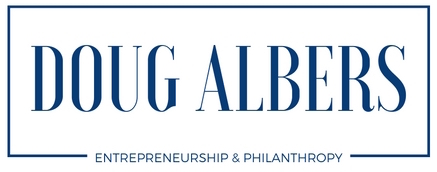While previous generations believed that in order to be philanthropic you must have the personal wealth to do so, the newest generation of professionals don’t seem to agree. Younger generations are using the technology that they have used to revolutionize their day-to-day lives in order to help make the world a better place, and they are not waiting until they have worked hard and become successful to start trying to make a difference and giving charitably.
For previous generations, businesses were driven by making money, and charity was about doing good. It was very black-and-white. Nowadays there are much more nuanced shades of gray. Investment and business tools haven’t just changed the workplace, they are also now changing the way that people can do good worldwide.
Obviously, you still see the younger generation of adults becoming wealthy and donating large sums of money, (i.e. Mark Zuckerberg and his wife Priscilla who announced with the birth of their daughter a $45 billion Facebook stock donation to an LLC devoted to bettering the word.) But there are smaller and possibly just as effective ways to give. Impact investing is a big change. Alternative energy sources, for example. Young business professionals are seeing a big trend in investing in companies that they believe will not just offer a return, but also work to improve the state of the world.
Effective altruism is another place that we have seen philanthropy going. Rather than giving based on emotion or intuition, we are seeing the immense amount of data the digital age provides givings us much more specific metrics on where money is going, and where money does the most good. For example, if you want to better the life of a child, is funding public education more effective at changing a life than funding tradesmanship mentoring? Which animal fund saves the most wildlife, or does the best at preventing environmental harm? What are the most effective but least funded organizations? All of this readily available data is leading to very different charitable giving than we have seen in the past.
Also consider charitable consumerism. Warby Parker and TOMs are two of the bigger examples, but Method and similar companies are giving a percentage of products to charity, or giving one-for-one. One-for-one giving is for every pair of Warby Parker glasses frames and lenses you purchase, they will also donate a pair of frames and lenses to children in need. If you are going to spend your dollars purchasing products anyhow, many young professionals are looking to spend those dollars in ways that matter to others as well.
You are also seeing an uptick in a “get the money to the source” philanthropy. Young professionals are tired of middlemen who keep the majority of the profits for themselves and for administrative costs. The internet is allowing a large amount of digital, small, lean charitable organizations to get the money directly where it goes with very little third-party shrinkage. For example, DonorsChoose.org allows donors to give directly to teachers who need supplies for thier underfunded classrooms, and you get to choose which classes you would like to support. Or Kiva.org, which is a microlending platform that allows you to donate amounts as little as $25 to budding entrepreneurs in third-world countries. You can help a seamstress buy supplies to make clothes, help a farmer buy seed crops, or help a barber rent a barbershop all over the world. They are loans, not charity, so you can focus on the hand-up versus hand-out, and the loans have a very high rate of full repayment, which you can then either withdraw or reinvest in another economy and another entrepreneur.
In the end, the next generation of business and professionals is heading towards a more hands on, easier, and more measurable approach to philanthropy, and I believe it will change the world for the better.

